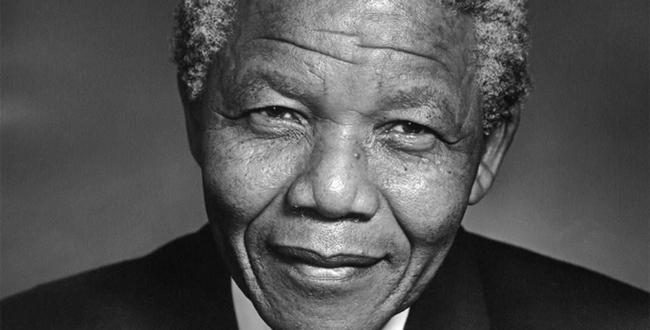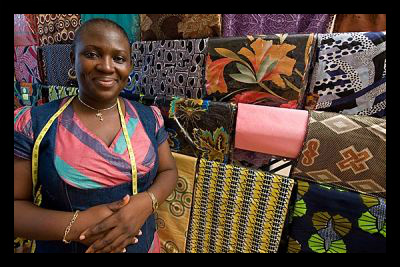
This month the international community celebrated Nelson Mandela International Day, the first time the day has been celebrated since the former South African President’s death.
Nelson Mandela Day, celebrated on July 18, the day of the former South African President’s birthday, was approved in 2009 by the United Nations. The day was created to inspire others to carry on the Nobel Peace Prize recipient’s legacy and to honor the beloved leader himself. On July 18, people around the world are encouraged to offer 67 minutes of their day to those less fortunate. After dedicating 67 years of his own life to working for social justice, Mandela passed away in his home in 2013 at the age of 95.
This year, a foundation spokeswoman from the Nelson Mandela Foundation estimated that 126 countries participated in Mandela Day, as over 1,200 positive deeds were registered on the foundation’s website.
“We have been heartened by the number of sustainable projects still thriving. At the same time it has been inspiring to see the range of innovative new projects to emerge,” said spokeswomen Danielle Melville.
Below are a collection of 10 quotes from Nelson Mandela himself, ranging from his time as prisoner 4664 on Robben Island to the occasion of his many accomplishments and rewards:
1. “There will always be good men on earth, in all countries, and even here at home.” -From a letter to his former wife Winnie Mandela, written in Robben Island, 1970
2. “These countless human beings, both inside and outside our country, had the nobility of spirit to stand in the path of tyranny and injustice, without seeking selfish gain. They recognized that an injury to one is an injury to all and therefore acted together in defense of justice and a common human decency. Because of their courage and persistence for many years, we can, today, even set the dates when all humanity will join together to celebrate one of the outstanding human victories of our century.” -From his Acceptance Speech at the Nobel Peace Prize Ceremony, Norway, 1993
3. “We understand it still that there is no easy road to freedom. We know it well that none of us acting alone can achieve success. We must therefore act together as a united people, for national reconciliation, for nation building, for the birth of a new world. Let there be justice for all. Let there be peace for all. Let there be work, bread, water and salt for all. Never, never and never again shall it be that this beautiful land will again experience the oppression of one by another and suffer the indignity of being the skunk of the world. Let freedom reign.” -From his Inauguration as President of South Africa, South Africa, 1994
4. “I learned that courage was not the absence of fear, but the triumph over it. I felt fear myself more times than I can remember, but I hid it behind a mask of boldness. The brave man is not he who does not feel afraid, but he who conquers that fear.” -From his book, Long Walk to Freedom, 1994
5. “If I were to be granted one wish on this occasion, it would be that all South Africans should rededicate ourselves to truing this into the land of our dreams; a place that is free of hatred and discrimination; a place from which hunger and homelessness have been banished; a safe place for our children to grow into our future leaders.” -From his 80th Birthday Celebration, South Africa, 1998
6. “My inspiration are men and women who have emerged throughout the globe, and who have chosen the world as the theatre of their operations and who fight socio-economic conditions which do not help towards the advancement of humanity wherever that occurs. Men and women who fight the suppression of the human voice, who fight disease, illiteracy, ignorance, poverty and hunger. Some are known, others are not. Those are the people who have inspired me.” -From a speech at London School of Economics, England, 2000
7. “What counts in life is not the mere fact that we have lived. It is what difference we have made to the lives of others that will determine the significance of the life we lead.” -From Walter Sisulu’s 90 Birthday Celebration, South Africa, 2002
8. “One of the most important lessons I learned in my life of struggle for freedom and peace is that in any conflict there comes a point when neither side can claim to be right and the other wrong, no matter how much that might have been the case at the start of the conflict.” -From a Video Message for the Signing of the Geneva Accord, 2003
9. “As I am former prisoner number 46664, there is a special place in my heart for all those that are denied access to their basic human rights. We urge countries to make the policy changes that are necessary to protect the human rights of those who suffer from unfair discrimination.” -From the Closing Ceremony of the XV International AIDS Conference, Thailand, 2004
10. “We are in some ways reminded today of the excitement and enthusiasm I our own country at the time of our transition to democracy. People, not only in our country, but around the world, were inspired to believe the through common human effort, injustice can be overcome and that together a better life for all can be achieved.” -From a letter to President Barack Obama on the occasion of his Inauguration, 2009
– Blythe Riggan
Sources: Citizen, Mandeladay.com, All Africa, NelsonMandela.org, New York Times, USA Today, Nelson Mandela by Himself
Photo: Telegraph



